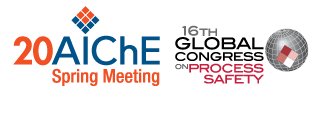

Representative case study of a wastewater stream containing settleable solids and chemicals is considered as the motivating example where the minimum purity requirements for water reuse have been specified. Primary and secondary stages were studied considering three types of technologies for the former, and four types of technologies for the latter. In primary treatment, the technologies are based on the particle size: sedimentation, filtration, and microfiltration; whereas, in secondary treatment, the technologies are based on the ability to remove chemicals, such as adsorption, disinfection, and rotating biological contactors, and a tertiary treatment method of advanced oxidation process is used if the desired purity limits are not achieved in prior treatment stages. The contaminant removal efficiencies and costs associated with the operation of these technologies were obtained through information collected from design literature. The primary and secondary treatment stages were studied by means of the P-graph approach, which has been extensively deployed to evaluate problems of combinatorial nature, such as supply chains, evacuation routes design, and process network synthesis (PNS) [4]–[6]. This advantage is that not only the best structure in terms of cost is obtained, but also a ranked list of all feasible near-optimal solutions is created. This information can be relevant when considering additional performance criteria, such as controllability, operability, flexibility, sustainability, etc.
For the primary stage, an initial structure was obtained by joining the input and output materials with the technologies. The water-rich streams leaving the primary stage can be considered as potential input for the next stage. The secondary structure is constructed for each of the water-rich streams leaving the primary stage by joining the plausible materials and technologies of the secondary stage. The resultant overall network consisting of the initial and secondary structure is used as the input for the P-graph algorithm, which determines the most cost-effective treatment process for a certain set of parameters. Subsequently, a parametric study is carried out for a range of feed water compositions, with the objective of generating cost-effective process structures that are also capable of satisfying the treatment requirements under different inlet water conditions. Therefore, this work aims at providing guidelines for the design of efficient wastewater treatment networks depending on the inlet water composition and treated water requirements.
Keywords: Wastewater treatment, process network synthesis, exhaustive enumeration, P-graph
References:
[1] M. & E. Inc, G. Tchobanoglous, F. L. Burton, and H. D. Stensel, Wastewater Engineering: Treatment and Reuse, 4th edition. Boston: McGraw Hill Higher Education, 2002.
[2] K. M. Yenkie, “Integrating the three E’s in wastewater treatment: efficient design, economic viability, and environmental sustainability,†Current Opinion in Chemical Engineering, vol. 26, pp. 131–138, Dec. 2019.
[3] K. M. Yenkie, S. Burnham, J. Dailey, H. Cabezas, and F. Friedler, “Generating Efficient Wastewater Treatment Networks: an integrated approach comprising of contaminant properties, technology suitability, plant design, and process optimization - ScienceDirect,†in 29th European Symposium on Computer Aided Process Engineering, Eindhoven, Netherlands, 2019, vol. 46, pp. 1603–1608.
[4] I. Heckl, F. Friedler, and L. T. Fan, “Solution of separation-network synthesis problems by the P-graph methodology,†Computers & Chemical Engineering, vol. 34, no. 5, pp. 700–706, May 2010.
[5] H. Cabezas, A. Argoti, F. Friedler, P. Mizsey, and J. Pimentel, “Design and engineering of sustainable process systems and supply chains by the P-graph framework,†Environ. Prog. Sustainable Energy, vol. 37, no. 2, pp. 624–636, Mar. 2018.
[6] L. Vance, H. Cabezas, I. Heckl, B. Bertok, and F. Friedler, “Synthesis of Sustainable Energy Supply Chain by the P-graph Framework,†Ind. Eng. Chem. Res., vol. 52, no. 1, pp. 266–274, Jan. 2013.
Presenter(s)
Language
Pricing
Individuals
| AIChE Member Credits | 0.5 |
| AIChE Pro Members | $19.00 |
| Fuels and Petrochemicals Division Members | Free |
| AIChE Graduate Student Members | Free |
| AIChE Undergraduate Student Members | Free |
| AIChE Explorer Members | $29.00 |
| Non-Members | $29.00 |
